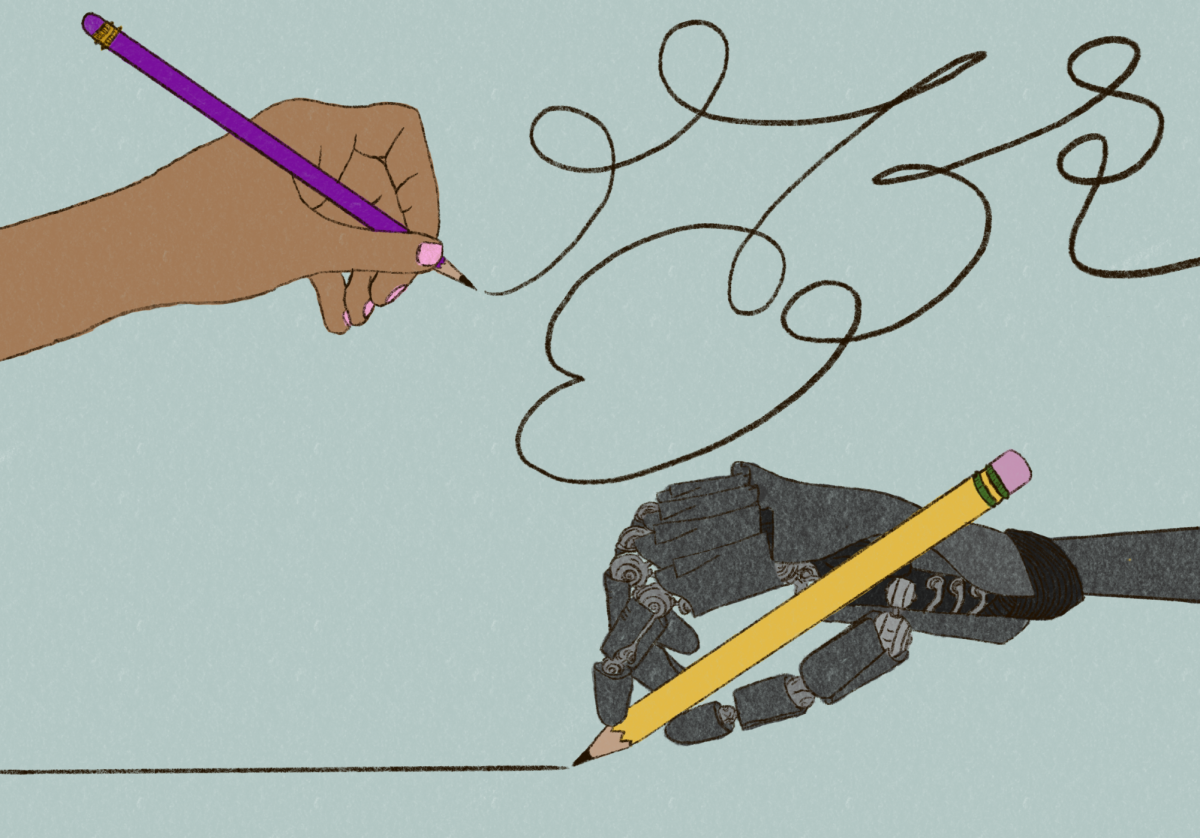Like Chat GPT, AI art has become controversial in the art world. Software like DALL·E 2, Leap AI and Craiyon continue to rise in popularity as technology grows, potentially outsourcing the very artistry that students in creative fields use as a means of expression.
However, programs that artificially generate art are not going anywhere. While they are certainly controversial, rather than completely undermining creative fields, there is real potential for these programs to enhance the work artists already do.
Rather than resisting the proliferation of AI-generated art, creative departments at UT should explore its potential as an educational and artistic tool.
Art History professor Michael Charlesworth does not see AI art as a positive addition to artistic spaces; he does not believe artificially generated art evokes the same meaningful impact as traditional artwork.
“(In traditional art), you can find traces — you can see evidence of thought, sensibility, decision making, problems and all sorts of things that open up a kind of human dimension to it,” Charlesworth said. “What I’ve seen of AI-generated art is all on the surface and completely lifeless.”
Studio art senior Marina Newlin spoke to how the technologies themselves are not able to fulfill our cultural definition of art.
“If the intention (of using the program) is to communicate something emotionally intense or more in depth, AI is not going to be able to do that just by feeding it a prompt,” Newlin said.
In our own culture, art is defined as a highly expressive medium with the capability to communicate socially relevant themes. We like to think of it as the epitome of humanity. Many argue that because AI art is created by technology, it does not contain the human touch that fits our definition of art.
Francesca Balboni, a doctoral candidate in the department of art and art history, has a contrasting perspective and explained how the definition of art actually varies more based on culture.
“The definition of art is so culturally and historically specific,” Balboni said. “(Within) so many of the ritualistic objects that you’ll find in an art museum from other cultures there is, in fact, no ‘art’ the way that it’s understood in the Eurocentric West. Putting the human in art is pretty fundamentally a Western construct.”
This more general understanding of art puts these programs in a completely different perspective. Depending on the user’s culture, these programs could fulfill cultural understandings and expectations of art, teaching students entirely different perspectives.
Balboni also pointed out that these programs do not necessarily lack a human touch.
“They still have to be directed by someone,” Balboni said. “These algorithms are still made by people.”
Not only are they made by people, AI algorithms respond to directional text written by the user and create a work of art based on their specifications, letting the person using the program to directly manipulate the image.
The rest of the image is left up to the chance of the program itself. While this seems counterintuitive to the intention of an artistic work, there is also something to be said for the spontaneity these programs could offer.
“Spontaneity has long been a part of art making that artists explore more or less, depending on their own interests,” Balboni said. “Some people leave almost everything up to chance.”
This juxtaposition between direct manipulation and technological spontaneity could provide artists an interesting new approach to their art.
“(AI art generators) could just become a new medium of art making or as a part of art making, (which) I think is kind of exciting,” Balboni said.
Balboni and Newlin both see these programs becoming artistic tools.
While we can integrate these programs, it is important to acknowledge that not all uses of AI art programs are positive. There is still the rising threat of individuals utilizing these programs to create forgeries and falsely attribute unclaimed works, but as Balboni explained, this has always been an issue within the art world.
It’s clear there is resistance to these programs, but by teaching students to use these tools rather than resent them, UT could be on the forefront of artistic achievement.
Outside of their potential abuse, it seems that AI art generators do not pose as much of a threat to students and individuals within creative fields. Technology alone cannot replicate the artistry and ingenuity artists put into their work; however, it can be a useful tool.
Lack is a dance and Plan II sophomore from San Angelo, Texas.















